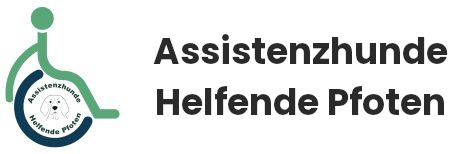If you would like to train your assistance dog yourself
Not every person with a disability goes through a professional assistance dog school. Some decide to train their own dog themselves – with the support of a certified trainer. This so-called self-training is permitted by law in Germany – it can be very rewarding, but is also associated with challenges.
What does “self-training” mean?
Self-training means: You take over the training of your dog yourself – of course with the support of an experienced, licensed trainer.
You need:
- a lot of patience
- Good specialist knowledge
- a close bond with the dog
- and long-term motivation
Because training an assistance dog is demanding – for the dog and for you.
The right start
It all starts with choosing the right dog.
Not every dog is suitable for the job of assistance dog. Suitable dogs are usually:
- Physically healthy (e.g. no joint problems)
- friendly, calm and resilient
- Curious and willing to learn
It is also important that the dog does not show any lasting fear or aggression – otherwise it will not be able to perform this task reliably.
What does an assistance dog need to learn?
The training depends on your individual needs.
A dog for a person with PTSD needs to learn different things than a dog for a person with mobility impairment or epilepsy.
Typical tasks in self-training are
- Basic obedience (e.g. sit, down, on the lead)
- Targeted assistance tasks (e.g. waking, warning, comforting)
- Everyday training in public spaces
- Dealing with stress & stimuli
Many use positive reinforcement such as praise or clicker training. A good trainer will help you to find the way that works best for you and your dog.
Opportunities for self-training
✅ You grow close to your dog
✅ You set the pace
✅ You learn a lot about dogs, communication and yourself
✅ You are independent of waiting lists at professional schools
But there are also challenges …
❗ Self-training requires a lot of discipline, time and expertise
❗ The balance between support and excessive demands is crucial
❗ You must pay attention to signals to see if the dog is really suitable for the task
Attention
If the dog does not pass the aptitude test, it can be painful. Often the dog then has to move to a new home – because a stressful environment can continue to stress it, even if it is no longer being trained. This applies, for example, to
- health problems
- strong fears
- aggressive behavior
Honest self-reflection is required here – and a responsible decision in the interests of the dog.
The conclusion: a strong team
If everything goes well, you will become a well-coordinated team – with a deep connection, trust and pride. Many people report that self-training has not only changed their lives, but also their view of dogs, responsibility and partnership.
Conclusion
Self-education is not an easy path – but it is a very personal one.
If you are willing to learn a lot, be consistent and always keep your dog’s needs in mind, this path can be a very fulfilling experience – for you and your dog.
